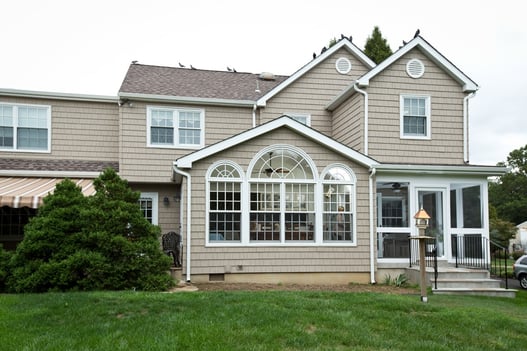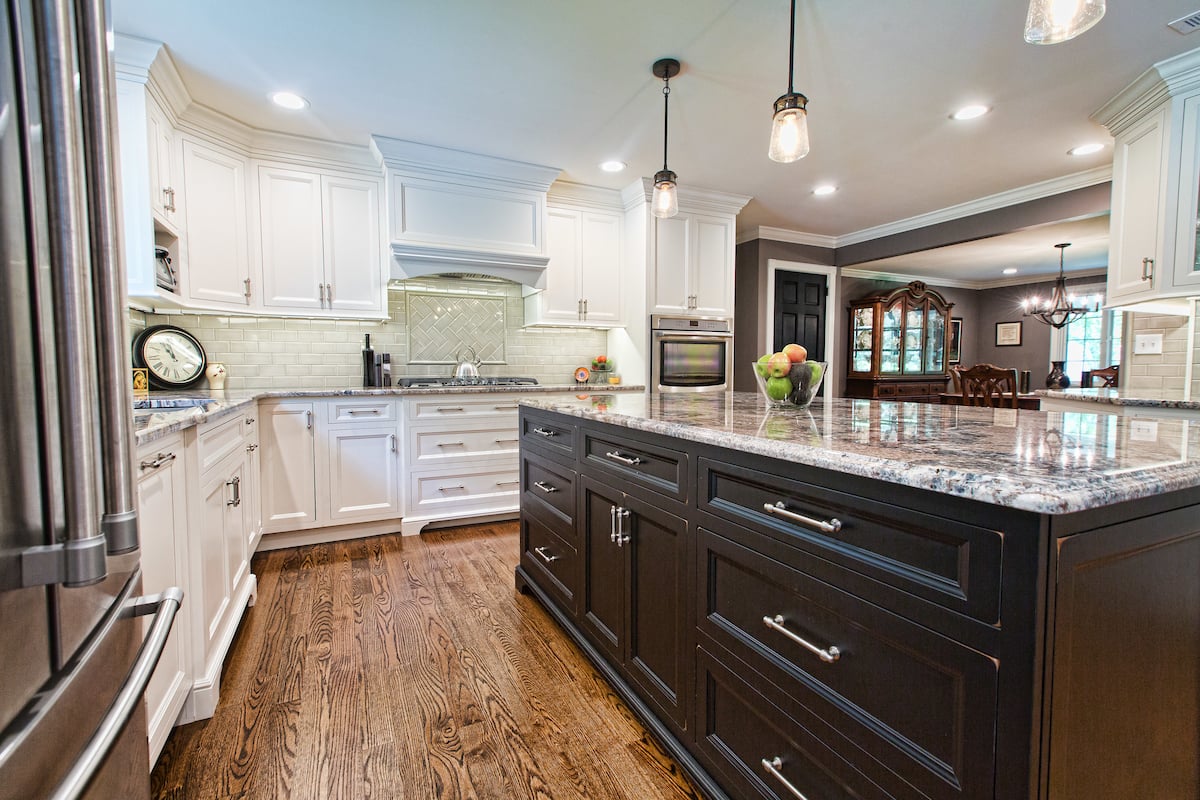A two-story addition is also one of most expensive of all home improvement projects. According to “Remodeling” magazine’s annual “Cost vs. Value Report”, the national average cost of a 24-foot-by-16-foot, two-story addition is about $176,108. With that kind of investment at stake, you’ll want to make sure your planned addition won’t make your house prohibitively expensive or out-of-character for your neighborhood.
Evaluate Your Neighborhood
Walk around your neighborhood with a camera and a notepad to get a clear sense of how nearby homes compare with yours in terms of size, appearance, and features. Will building the two-story addition you envision keep your house within the neighborhood norm? An addition that is completely out of scale with the street may hurt your home’s resale value.
If that’s the case, you may be better off investing in a different neighborhood and buying a house that already has the size requirements and amenities you seek. You might find that expanding your outdoor patio or deck, or finishing your basement will give you the extra living area your family needs.
Consult a local REALTOR® for a list of “comps” — a report that compares the features and values of homes in your area. Most real estate agents will provide this for free, and are happy to put you on a mailing list to receive updates.
Also check out your local tax assessor’s website to compare property values — information such as purchase price, amenities, and tax assessments are public record. That search may also indicate how your proposed addition affects your property taxes.
Understanding Codes and Restrictions
Devised to ensure the health and safety of occupants and preserve neighborhood value, building codes and ordinances dictate details such as setbacks — the distance from your property line to the nearest structural points of your house. Because a two-story addition is a physically large project, knowing your setbacks is a key first step in evaluating your property.
Typically, the minimum allowable setback for a single-family detached house in the suburbs might be 20 feet from the curb or street, 10 feet on each side, and 15 feet to the back, though each jurisdiction varies in specifics. Ignoring these regulations can result in fines and you may even be ordered to remove the new construction.
In some instances, utility companies or other entities may have established right-of-ways through your property. Although rarely used, these right-of-ways provide a space corridor so municipalities and other service providers can access vital systems for repair. These right-of-way corridors may affect your setback restriction.
Note that setbacks often refer to the closest physical part of the addition to the lot line. In some cases, that may be the eaves rather than the side of the addition.
Codes and ordinances also regulate building height to preserve views from homes behind or around yours. For suburban homes, the height restriction is about 35 to 45 feet. Some communities add solar restrictions that limit the height of new construction so that surrounding dwellings have access to sunlight.
Codes also dictate the maximum percentage of the lot that can be covered by built structures, typically up to 50% for an urban or suburban property.
If you live in a designated historic district or one governed by a neighborhood or home owners association, certain rules and covenants might be even more restrictive.
Start by gathering basic information about your house such as surveys, lot dimensions, and property lines. These are available through your municipal property office and local building department. Many public records, regulations, and permits can be examined on government websites.
Consider Your Property’s Needs
The next step is to refine your ideas for a room addition by inspecting your home and property. Although a design professional, such as an architect, will help solve possible problems, you’ll want to enter design discussions with clear ideas for a basic plan that suits your needs and lifestyle.
Determine if there appears to be an area that is within allowable setbacks that would accommodate an addition. Note significant landscape features, such as trees and retaining walls, that might have to be altered or removed — at additional costs.
Visualize exit and entry points for your addition, and how new traffic patterns will be established both inside and outside your home. Other projects, such as a new deck or patio, may be necessary to ensure your addition is well-integrated with your property. If so, be sure to plan for the additional expenses you might encounter. Also, be sure to develop an understanding of how an addition will affect the living spaces and traffic patterns inside your house. Make sure that access to the new rooms flows along a logical traffic corridor and doesn’t disrupt existing living areas.
Hiring Professionals for Your Addition
The complexity of a two-story addition means engaging a knowledgeable architect and a reputable contractor. This will be a big part of your dream home, and you want to ensure the best outcome.
Your architect will prepare a complete and code-compliant set of plans as part of the building permit application, and will help you decide on the best solutions in terms of the look and location of your addition. Expect to pay an architect 5% to 20% of the total job cost.
Your contractor will coordinate all workflow, schedule delivery of materials, and help you make decisions that occur during the construction process. A contractor makes a bid for the total project — be sure to ask for an itemized bid.
Another option is hiring a Design-Build Contractor, who includes handles the design portion of the project with their own architect, and you do not have to pay a separate fee. Tilghman Builders is structured this way, and we find that it takes a burden off our clients, and also helps the renovation stay on budget. Having an architect and contractor on the same team will help avoid any confusion or miscommunication about your addition project.
While it might sound like a no-brainer, be sure to hire professionals with experience doing the kind of project you envision. If you’re opting for a two-story addition, contractors that have only done kitchen remodels might not be the best fit. Ask neighbors who’ve done similar renovations for recommendations and then benefit from their experience. Your search should include visits to completed projects and bids from several prospective architects and contractors.
Hiring professionals enables you to focus on making informed and timely decisions, protecting your budget, managing the stress of a room addition, and coordinating and communicating with your project team.
When you’re ready to begin planning and completing your home addition project, be sure to contact our team with any questions and an estimate for your project.






